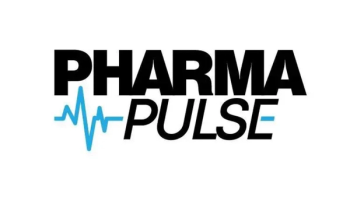Key Takeaways
- Speed is Critical. The first 24 hours after a prescription are crucial—nearly half of patients are lost immediately without efficient onboarding. Rapid, streamlined hub services are essential to keep patients engaged and on therapy.
- Digital and Multichannel Enrollment Is Key. Combining traditional methods (fax, phone) with digital tools (EHR integration, portals, NCP channels) improves enrollment efficiency, reduces friction, and captures more patients early.
- Future-Proofing Hubs is a Must. With ongoing policy uncertainty, hubs must prioritize adaptable, resilient designs—focusing on process speed, modularity, data tracking, and selecting partners who can evolve with regulatory change.
It’s an understatement to say there’s a lot going on right now that could impact pharmaceutical companies’ and drug brands’ patient access strategies. With pricing, Medicare frameworks, pharmacy benefit manager rebates, and more seemingly up for redesign, it would be hard not to fixate on regulatory uncertainty. And, by the time this article is published, it’s likely that even more chaotic policy and regulation conversations will be afoot.
I urge you to remember that, amid this uncertainty, one constant remains where manufacturers maintain direct control: hub services that get patients started on therapy faster. Rapidly connecting patients to their prescriptions through well-designed access and support processes is a fundamental component of any drug’s performance in the market, and one that will endure regardless of which policy changes materialize.
The unchanged truth: The first 24 hours still decide patient access
With current data indicating that nearly half (44%) of prescribed patients for any given medication are lost within the first minute due to lack of coverage, manufacturers must maintain laser focus on the speed and efficiency of their hub onboarding tactics, particularly in those critical first 24 hours after prescription. The goal at this point is to quickly preserve those patients subject to a national drug code block (formulary exclusion) while simultaneously engaging the remaining eligible patient segment.
From welcome calls and prior authorizations to case management and financial assistance programs, hub services are designed to conquer a range of medication access obstacles with a complex ecosystem of patient support. But if a brand’s hub program doesn’t include a smooth, straightforward patient enrollment and onboarding process that engages the prescribed population immediately, the rest of the hub’s services will be out of reach, making your investment in the whole system far more expensive in terms of ROI.
The first critical job a hub does is create momentum
Rapid hub onboarding creates essential momentum that carries patients successfully to therapy. Speedy enrollment is the crucial first step to securing consent, swiftly clearing insurance hurdles, and unlocking access to benefits like financial support so patients stay engaged. This momentum becomes the difference between a prescription that gets filled and one that becomes another abandonment statistic.
There are key steps brand teams and their hub partners can undertake to ensure patients are able to quickly and easily start on therapy:
1. Maximize modes of enrollment
Traditional channels such as fax and phone remain viable and necessary options in order to maximize healthcare professional interaction with your hub.
But digital enrollment channels have become the norm, including direct electronic health record integration that enables providers to enroll patients within the prescribing workflow, reducing administrative burden and accelerating the onboarding process from the moment of prescription. In addition, the non-commercial pharmacy channel further expands enrollment opportunities by connecting patients at the pharmacy level, capturing those who might otherwise fall through traditional enrollment gaps.
2. Leverage all your digital tools
Digital portals provide a self-service option, allowing prescribers and patients to initiate enrollment 24/7 through a user-friendly website. These entry points are complemented by real-time electronic benefit verification capabilities that deliver immediate insurance coverage insights, dramatically reducing the traditional wait times from days to minutes.
As artificial intelligence (AI) progresses, hub providers will begin to integrate advanced AI tools into patient relationship management software as a background application that helps hub agents identify and implement the “next best action” for each patient.
As a result, we envision a near-term future when the entire onboarding process is accomplished with even greater operational efficiency.
3. Understand the minimum information required for enrollment
Hub enrollment can often be completed with just five “minimum viable enrollment” fields: first name, last name, date of birth, sex, and zip code. This reduces friction and boosts immediate hub enrollment, while other identifiers (e.g., household income, concomitant meds) can be collected later as needed.
Future-proof your hub investment
Policy changes are coming; that’s a given. Here’s how to make sure your hub keeps getting patients on therapy regardless of what Washington decides:
Prioritize fundamental process velocity over policy prediction. Use strategies such as multichannel enrollment, be ready to enroll with minimum viable patient data, maximize digital tools when they help with scale and accuracy, and prioritize thoughtful technology integrations that boost results rather than flashy consumer technology that are simply nice-to-haves.
Evaluate hub providers based on their adaptability. You’re designing a hub that works precisely for today’s prescription journey, but be sure your partner will talk openly about how change may impact your drug in the future and how your hub would need to respond.
Design for process resilience. Think about modular approaches, data interoperability, operational playbooks, and other tactics that will help you retain the strongest and most effective parts of your hub if and when change is necessary.
Measure what matters through any policy environment. Build in the ability to track key metrics such as time to therapy, abandonment rates, and financial impact of hub performance.
Final thoughts
Budget cuts may be coming, driven by drug pricing changes or economic pressures. As a result, you could find yourself being forced to explain how the hub needs to serve more patients now to accomplish revenue goals. Be ready to defend your hub by showing how it directly improves prescription lift, fills, and patient adherence.
By prioritizing a “true north” of speedy enrollment to capture the widest patient population and taking thoughtful approaches to future-proof the hub design for best outcomes, you’ll have a strong case for the hub being indispensable to your company’s brands.
About the Author
Chris Dowd is Senior Vice President, Market Development, at ConnectiveRx. With a nearly 30-year career spanning leadership roles across Big Pharma, healthcare startups, and the patient support space, Dowd is a preeminent industry voice in patient access and adherence.






